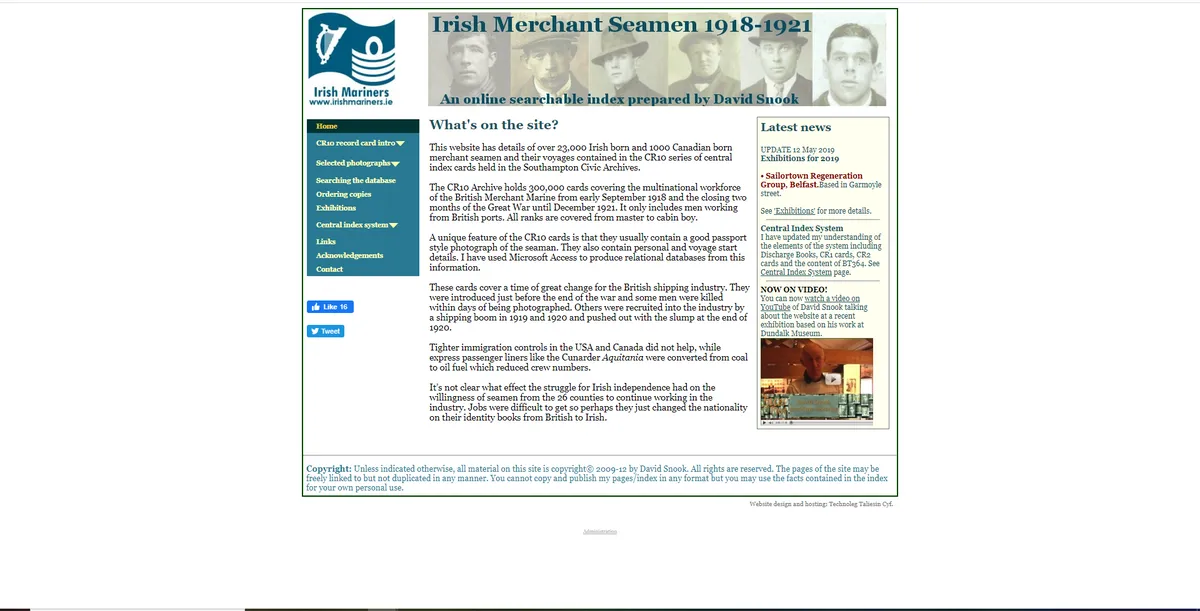How to tell whether someone was in the Royal Navy or the Merchant Navy
In general, in family history, if your ancestor is called a 'seaman' in parish or census records, he served in the Royal Navy. However, 'mariner', 'master', 'mate' or 'skipper', mean he was probably a seaman or officer with the Merchant Navy.
How to find Merchant Navy records
Merchant seamen crew lists are the most important source for finding Merchant Navy records. When an individual joined a ship, his name was noted on the crew list and he signed articles of agreement. The resulting crew lists and agreements survive in The National Archives, the Maritime History Archive in Canada, and county record offices.
The best websites for finding Merchant Navy records
1. Crew List Index Project (CLIP)

The Crew List Project will help you find crew lists held in county collections, which you can search by ship's name or official number. Findmypast also has crew lists and agreements for 1861-1913.
2. 1915 Crew Lists

Work on this wonderful resource for Merchant Navy records began in 2012. Volunteers marshalled by The National Archives and the National Maritime Museum (and with help from the CLIP team) began transcribing all of the surviving crew lists from 1915.
There are more than 39,000 crew lists here, featuring over 750,000 names. You can search for a crew member by forename, surname, rank, vessel name and/or birthplace. You can also search for a vessel, using its name or official number (vital for distinguishing between two vessels with the same name). There are also useful FAQs.
3. The National Archives (TNA)

The Registrar General of Shipping and Seamen kept Merchant Navy records, so most material is held in the Board of Trade record series (BT). There are guides to tracing merchant seamen for 1858-1917 and after 1917. The registers of certificates for masters and mates have now been added to Discovery, TNA's online catalogue, and can be searched by name.
You can also search First World War Mercantile Marine Medal recipients on TNA's website and there is also a guide to researching recipients of Second World War campaign and gallantry medals.
4. Findmypast

Subscription website Findmypast has an excellent collection of Merchant Navy records including the CR10 index cards which often include a photograph of the seaman. These and other 20th century records can be found within their collection 'Britain, Merchant Seamen, 1918-1941'. Other useful Merchant Navy Records on Findmypast include: Britain, Merchant Seamen, 1835-1857, England and Wales Merchant Navy Crew Lists, 1861-1913 and White Star Line Officers' Books, 1868-1934.
5. Ancestry

Ships' captains (known as 'masters') and mates had to be certificated, and their applications for certificates (1850-1927) are available via subscription website Ancestry in the collection UK and Ireland, Masters and Mates Certificates, 1850-1927. This may disclose place and date of birth and address. When you find a record, use the back and forward buttons to view the complete application form, which often reveals a list of ships that they served on.
6. Irish Mariners

This free resource contains details of more than 23,000 Irish and 1,000 Canadian seamen's Merchant Navy records from the CR10 series at Southampton Archives. As detailed on the homepage: "A unique feature of the CR10 cards is that they usually contain a good passport style photograph of the seaman. They also contain personal and voyage start details." You can search by surname; surname and forename; surname and initial; RS2/Identity Certificate Number; and add a year of birth.
7. Welsh Mariners

Although the design of this website looks rather old-fashioned, it's still updated and is a good resource for Welsh Merchant Navy records. It lists nearly 24,000 Welsh merchant masters, mates and engineers who were active between 1800 and 1945. Most of the masters and mates were from West Wales. You might also wish to investigate Swansea Mariners and Cardiff Mariners.









